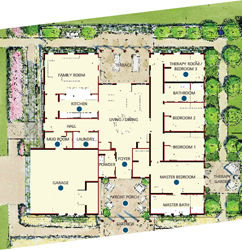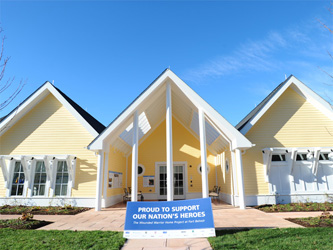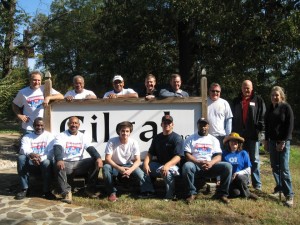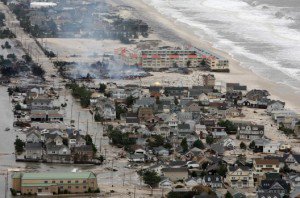Share This
Related Posts
Tags
Helping Hands
By Erica Rascón on Dec 18, 2012 in News
‘Tis the season of goodwill towards our fellow man, the time of year when many of us pull ourselves away from our desks, away from our daily routines, and remember to lend a helping hand to those in need. Industry leaders throughout the nation are also taking a time-out from regular operations to give back to their communities.
These outreach efforts extend beyond the necessary yet temporary solutions of food drives and soup kitchen into an arena with long lasting and potentially life changing benefits: housing. By creating safer, greener, and more accessible housing for those in need, industry leaders have found a way to make lasting impact by simply doing what they do best.
Virginia-based Clark Realty Capital, a Yardi client, initiated The Wounded Warrior Home project which creates accessible homes that are also beautiful and family-friendly. The idea came after Clark Realty Capital real estate developer A.J. Caputo took a tour of Fort Belvoir Virginia with project leader Casey Nolan. As the two explored the premises, they noticed an absence of housing accommodations made for injured veterans. They instantly become interested in a way to address the needs of returned heroes.
The solution was called The Wounded Warrior Home project. Low- to zero-cost alterations to house plans make the spaces more accessible and accommodating: Oversized windows and contrasts between floors and walls make sight easier for those with visual impairments or brain injuries. Broadening hallways; lowering windows, microwaves, and countertops promote wheelchair friendly access. Such changes make a world of difference for a wounded veteran without adding to building costs. The changes simply require a reimagining of how a home should be built and what it should look like.
To come up with these plans, Caputo and Nolan contacted noted architect Michael Graves. Using research from IDEO and Graves plans, the team designed and constructed two homes that make functioning easier for injured veterans and their families. Beyond the aforementioned alterations for physical accessibility, the homes were designed with a wounded veteran’s sleep schedule in mind. Peace and quiet are vital for someone who is on heavy pain medications or any other sort of medication that may affect sleep patterns. By placing the bedrooms on a separate wing from the family areas, Graves and his team assured that the veteran could receive as much peace and quiet as possible for precious moments of sleep.
Two families have moved into the available homes. There is currently a waitlist for houses that are in development, confirming that The Wounded Warrior Project is meeting a need in the community that was previously overlooked.
The National Association of Home Builders and the NFL Players Association also teamed up to meet need in a specialized community. The two associations volunteered to support Gilgal, Inc., a nonprofit that provides housing services for homeless women recovering from addictions.
Volunteers made much needed repairs to Gilgal, fixing subflooring and flooring, correcting water damage in the bathrooms, and replacing ceilings. Once the interior of Gilgal was brought up to par, the volunteers turned their attention outdoors to landscaping projects. The results are a beautiful home and atmosphere in which previously homeless women and their caregivers can operate with dignity and pride.
NAHB and the NFL Players Association didn’t just stop there. Maintenance of the home and its grounds are an ongoing necessity that the volunteers have vowed to fill. Once a month, a team will return to Gilgal to perform upkeep on the house and the property. Their presence allows the staff to focus on what matters most: the women’s care, recovery, and healthy future.
While taking on single-family and multifamily housing developments can prove to be a task, attempting to restructure multiple cities attempts to tackle a different beast entirely. In the wake of Hurricane Sandy, Architecture for Humanity has created a 5 Point Plan to restore affected regions and help victims get back to normalcy. This long-term project has multiple phases and active entities that work together to make affected areas in New Jersey and New York better than ever. The five points include:
- a partnership between Architecture for Humanity volunteers, American Institute of Architects members, and other existing recovery agencies in both states
- an alliance between Architecture for Humanity and nonprofits to repair public spaces and edifices
- efforts to rebuild and remodel with sustainability in mind
- community designs and the execution of mitigation strategies for both coasts
- a technical assistance plan for property owners, particularly small businesses, multifamily housing and affordable housing properties
These ongoing efforts will require the continued participation of volunteers and the recruitment of new volunteers for the cause.
Whether it is addressing the needs of a single individual or the needs of entire cities, industry members are equipped with unique skills sets that can make us valuable contributors to our nation’s wellbeing. All it takes is our time and ample creativity to make a major impact on the lives of those around us.
What other outreach efforts have caught your attention this holiday season?




